Audi's eAWS Turns SUVs Into Quick-Change Artists
- By MT Bureau
- August 29, 2020
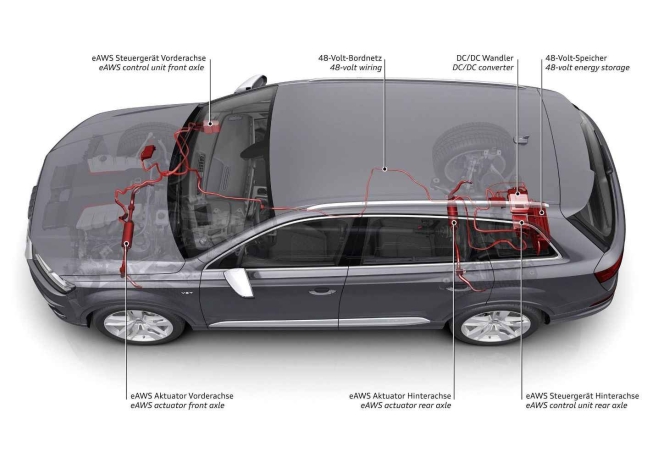
How do you provide a large SUV with sporty road-holding properties and minimal body roll without impairing ride comfort? Audi has resolved this by implementing electromechanical roll stabilization (eAWS). Assisted by the 48-volt onboard electrical system and powerful actuators, the stabilizers on the front and rear axle can be actively controlled according to the driving situation. As a result, the models retain their high level of ride comfort in straight-line driving. By contrast, in cornering and load alteration situations, they impress with enhanced lateral dynamics combined with minimal body roll. The technical advantages of Audi’s electromechanical solution: it is energy-efficient, operates in near-real-time and is virtually maintenance-free due to the absence of hydraulic elements.

What challenges do large SUV models pose to chassis engineers?
Customers of larger SUVs are thrilled by their many practical elements – from ample space in the cabin to cutting-edge chassis technologies to powerful engines and advanced control and assistance systems. Plus, an SUV can deliver superb performance off paved roads. Due to their design, these vehicles feature a higher curb weight and a higher center of gravity. This means that the body of an SUV leans more toward the outside in cornering than it does on models with a lower center of gravity.
What technology counteracts body roll and body movements?
In cornering, the body leans toward the outside due to the centrifugal forces, in other words, the wheel on the outside of the corner goes into jounce travel while the one on the inside of the corner goes into rebound – the vehicle rolls around its longitudinal axis. Torsionally flexible anti-roll bars between the left- and the right-hand side of the axle are proven means of compensating for this effect. They help reduce the body’s tendency to roll by applying reverse torsion torque to the suspension on the outside and inside of the corner, thus counteracting the body’s tendency to roll. This passive suspension component has the same effect in both cornering and straight-line driving. However, an effect that is desirable in cornering may impair ride comfort in straight-line driving on roads with bumps or potholes on one side of the surface. While passive solutions can reach their limits here, Audi has resolved this by means of electromechanical roll stabilization. Using sensors to capture and detect the situation, the system is designed to intervene with pinpoint precision only when less body roll is desired. Thus, the spring rate of the stabilizers on uneven and straight roads is lowered to a basic level and the spring and damper forces act by and large independently on the left- and right-hand wheels.
How does electromechanical roll stabilization work?
A conventional stabilizer operates passively. In other words, it just balances the suspension movements on both sides by means of mechanical coupling. By contrast, electromechanical roll stabilization can be specifically controlled. The system consists of two stabilizer halves per axle, with an electric motor operating between them on both the front and rear axle. It can rotate the stabilizer halves in opposite direction of each other and thus generate torque that counteracts body roll torque – individually for each wheel. As a result, it reduces the body roll angles and actively supports them against the physical effects of the driving situation. The system receives its commands via control units on the front and rear axle, which are part of the Electronic Chassis Platform (ECP). The ECP is the central brain of the chassis. Within milliseconds, it matches a variety of parameters such as speed, ride height, roll and pitch movements of the car, the friction coefficient of the road surface, the current driving condition such as under- or over-steer, plus the data of the chassis systems involved. From this input, the system calculates the ideal responses for the integrated components and adjusts them quickly and precisely to each other. The required electrical energy is supplied to the eAWS by a powerful 48-volt onboard electrical system. Within milliseconds, the system calculates suitable actuation values for the stabilizers. The electric motors deliver their power output via three-stage planetary gearboxes, with torque levels of up to 1,200 Nm being generated at the stabilizers.
What is “Vorsprung durch Technik” in the case of an electromechanical solution?
The 48-volt system enables an immediate system response even at low speeds. Latency between the sensors detecting body roll and the response by the electric motors is just a few milliseconds. Unlike hydraulic solutions, the eco-friendly electromechanical system does not require oil circuits and is maintenance-free. It is even able to recuperate energy by capturing suspension impulses on its electric motor, converts them into electrical energy and stores it in the lithium-ion battery of the onboard electrical system. The electromechanical solution uses energy more efficiently as well. In contrast to hydraulic circuits, it does not have to store and provide pressure.
How does the driver benefit from the system?
The system helps reduce the body’s tendency to roll, provides a sportier and more confident handling impression and emphasizes the versatile character of the large SUV models. It can actively distribute roll torque to the front and rear wheels and influence the car’s intrinsic steering characteristics such as the tendency to under- or oversteer. The Audi drive select driving dynamics system offers various setup options for this. Electromechanically active roll stabilization imparts to the driver a dynamic and precise feel in a variety of situations and enables enhanced handling characteristics. It is one of various systems that perfect the dynamism of the top-end models of the Q range. The Audi Q7, SQ7, SQ8 and RS Q8 models with their controllable stabilizers respond to the driving situation precisely as expected by the driver. On uneven road surfaces, the body movements are reduced while ride comfort increases. In sporty driving and at high cornering speeds, the car feels more stable and at ease. It pushes itself into a bend in the road. Audi has deliberately selected a setup that does not completely neutralize the roll angle but continues to impart an authentic feel of the driving dynamics situation.
How is the system on the racetrack and the real world?
Impressive proof of the influence of the controllable stabilizers was provided by race and test driver Frank Stippler in the fall of 2019. As part of the development work for the Audi RS Q8 the professional race driver, who in 2019 won the 24-hour race at the Nürburgring for the second time with Audi, set a new lap record for production SUVs. He managed to drive the 20.832-kilometer distance of the race track in the Eifel region in just 7:42 minutes. Forty percent of global Audi customers who have ordered a large Audi SUV model have chosen the option of electromechanical active roll stabilization. (MT)
- Ultraviolette Automotive
- Zoho Corporation
- Lingotto
- F77
- X-47
- Shockwave
- Tesseract
- Narayan Subramaniam
- Niraj Rajmohan
Ultraviolette Secures $45 Million Growth Capital From Zoho And Lingotto
- By MT Bureau
- December 04, 2025
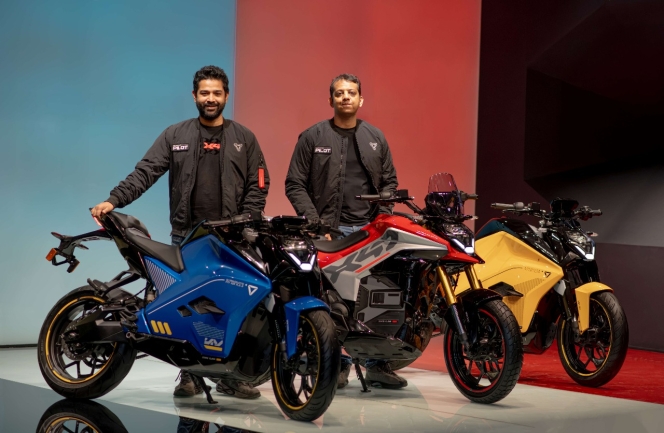
Bengaluru-based electric vehicle maker Ultraviolette Automotive has secured USD 45 million from Zoho Corporation and Lingotto, one of Europe's investment management companies as part of its ongoing Series E investment round.
The investment from Zoho Corporation was led by Sridhar Vembu, Mani Vembu and Kumar Vembu.
This growth capital will accelerate the domestic and international scale-up of current products F77 and X-47, as well as future product platforms Shockwave and Tesseract.
Ultraviolette has built a design and technology-led enterprise with the F77 and the recently launched X-47.
The company has expanded to 30 cities across India in a short span of 12 months and is expanding to 100 cities by mid-2026. The F77 motorcycles were recently launched in the United Kingdom, bringing Ultraviolette's presence to 12 countries across Europe.
Narayan Subramaniam, Co-Founder & CEO, Ultraviolette Automotive, said, “We are glad to announce our Series E investment from Zoho and Lingotto. Lingotto's legacy of backing iconic performance and mobility brands, combined with Zoho's long-term commitment to fostering cutting-edge Indian innovation, aligns perfectly with Ultraviolette's mission to build category-defining electric mobility solutions for India and global markets.”
Niraj Rajmohan, CTO & Co-Founder, Ultraviolette, said, "With the ongoing Series E investments, we are doubling down on growth and expanding our production to meet increasing demand. Our focus is on advancing breakthrough battery technology, elevating performance capabilities and expanding production to support upcoming product platforms. This investment will accelerate our journey towards scaling into India and global markets."
Disseqt AI Partners Tata Technologies And Infosys For Agentic AI Adoption
- By MT Bureau
- December 04, 2025
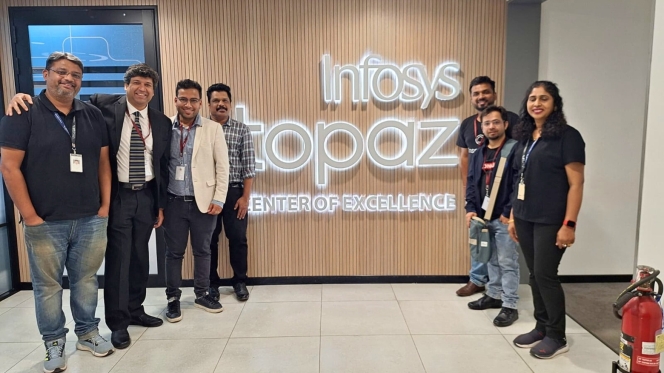
Agentic AI platform Disseqt AI has announced a partnership with Tata Technologies and Infosys. As per the agreement, Disseqt AI will assist both companies' IT and DevOps teams in developing and fast-tracking the production of tailored Agentic AI applications for automobile and FinTech companies globally.
The partnership aims to help auto and FinTech firms embrace customised Agentic AI faster and in a secure manner.
Disseqt AI, which has operations in Bengaluru, San Francisco and Dublin, provides an enterprise-grade platform for IT and DevOps teams. The company claims its platform cuts down Agentic AI testing and operations cost by 70 percent and improves productivity by up to 80 percent. The platform allows these teams to test, simulate and monitor their Agentic AI systems tailored across industries, ultimately enabling enterprises to operationalise tailored Agentic AI faster and at scale, without sacrificing ethics, governance and compliance.
Apoorva Kumar, Founder and CEO, Disseqt AI, said, “This is a landmark announcement for us as we further embed Disseqt into enterprise workflows for testing, simulation, monitoring and auditability purposes. We are already working closely with both Tata and Infosys on several projects and are proud to be part of their innovation initiatives”
Last month, Disseqt AI announced a strategic collaboration with HCLTech and Microsoft to guide financial services institutions with Agentic AI adoption.
Battery Passport Implementation Beyond EVs To Be Focus Of Barcelona Event
- By MT Bureau
- December 03, 2025

Battery and Energy Storage Europe has announced a programme focused on the EU Battery Passport, a regulatory milestone that becomes mandatory in February 2027. The Barcelona-based event will address the compliance gap for applications beyond the electric vehicle (EV) sector, which have dominated the conversation to date.
The event, taking place on 8th and 9th September 2026 at Fira de Barcelona's Gran Via venue, will focus on solutions and talks for applications that fall within the regulation's scope: stationary energy storage, industrial batteries, grid-scale systems, long-duration energy storage and emerging applications in aerospace, maritime and rail electrification.
With the February 2027 legal requirement date approaching, the programme will bring together industry leaders, technology providers, and policy experts to address the compliance challenges facing these diverse sectors.
The Battery Passport is a digital record documenting a battery's entire lifecycle, from raw material sourcing to production, performance and eventual recycling. From February 2027, it becomes mandatory for all rechargeable EV, industrial and LMT batteries over 2 kWh sold in the EU.
Linked via QR code, the passport will track each battery's complete lifecycle, including composition, carbon footprint and recycled content, fundamentally transforming supply chain transparency and sustainability practices across Europe.
The programme will explore implementation topics including digital infrastructure requirements, data management systems, supply chain integration, verification processes and recycling traceability.
Ken Davies, Conference Programme Director at Battery and Energy Storage Europe, said, "The Battery Passport represents one of the most significant regulatory shifts our industry has faced, yet many companies are still grappling with what implementation actually means for their operations. While the EV sector has dominated the conversation, there's a critical need to address how this regulation applies to stationary storage, industrial applications and the innovative battery technologies powering Europe's energy transition. With the clock ticking toward February 2027, Battery and Energy Storage Europe will shine a light on the practical implementation requirements for these often-overlooked sectors, connecting stakeholders with actionable solutions and bringing together the expertise, technology providers, and collaborative spirit needed to turn compliance into competitive advantage across the full spectrum of battery applications."
- Scania
- Horse Powertrain
- SCA
- hybrid truck
- Aurobay Technologies
- Matias Giannini
- Tony Sandberg
- Ingo Scholten
Scania Selects Horse Powertrain For Range-Extender Truck Pilot In Sweden
- By MT Bureau
- December 03, 2025
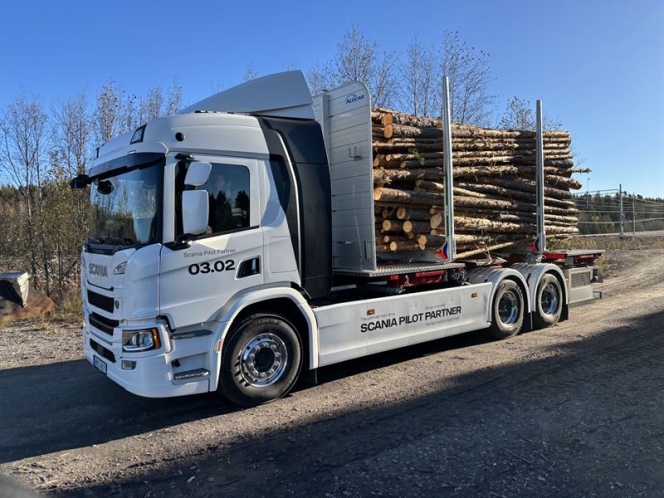
Horse Powertrain has been selected by Scania to provide its range-extender system for a pilot vehicle, currently operating as a heavy-duty timber truck in Sweden. The collaboration is a step in testing hybrid powertrain solutions for demanding transport applications such as forestry logistics.
The pilot is part of the Scania Pilot Partner program and is currently operating in Sweden under SCA, one of Europe’s forestry companies.
The vehicle is built to handle Sweden’s timber routes, transporting heavy loads through remote terrain where access to charging infrastructure remains scarce. By combining a battery-electric drivetrain with the generator designed in Sweden by Horse Powertrain’s division Aurobay Technologies, the truck achieves both long-distance capability and reduced CO2 emissions.
The test route covers approximately 16 km, with an operational target of completing 7–8 rounds per day, comparable to a diesel truck.
The configuration supports the truck’s battery packs with a 120 kW range-extender unit based on Horse Powertrain’s 2.0 litre multi-fuel engine. Acting purely as an onboard charger, the unit supplies electric energy when required during long hauls, temperature extremes, or delays.
Matias Giannini, CEO, Horse Powertrain, said, "Forestry logistics represents one of the toughest challenges for electrification. The forest roads of northern Sweden demand strength, range and reliability. Charging stations are few, but the timber never waits. You can think of our range-extender as a powerbank for a heavy-duty truck: silent, efficient, and always there when you need it. By partnering with Scania and drawing on our engineering excellence, we’re proving how a compact, high-efficiency range-extender enables electric trucks to operate reliably in the most demanding environments. It’s a technology that cuts CO2 now.”
Tony Sandberg, Vice-President at Scania Pilot Partner, added, "What we’re doing in Sweden with Horse Powertrain and SCA builds directly on the 100-day trial we ran together with a logistics partner in Germany earlier this year. That vehicle logged almost 22,000 kilometres and drove more than 90 percent of the time on pure electric power, only using the range-extender when no charging was available. The result was a CO2 reduction of over 90 percent compared with a diesel truck. Those learnings give us a strong foundation as we tailor the system for demanding Nordic timber operations."
Ingo Scholten, Chief Technology Officer, Horse Powertrain and Managing Director Sweden, Aurobay Technologies division, said, “Electrifying heavy-duty routes means understanding what drivers and operators face hour by hour. Long stretches without charging, variable loads and rapidly changing weather. This pilot lets us study those realities directly in day-to-day timber operations. The range-extender’s role is simple. Provide a stable, efficient energy supply so drivers can complete their full shift without interruption and with far lower greenhouse-gas emissions than a traditional diesel truck. The data we gather here will guide how we refine the technology and scale it for wider use across demanding transport applications.”
Horse Powertrain’s modular range-extender architecture builds on the core technology used in its passenger-car and light-commercial hybrid systems, adapted for the higher power output and durability demands of heavy-duty applications. Unlike conventional fixed-speed generator sets, the engine can operate across its full power band, allowing the system to deliver the required output efficiently while keeping fuel consumption, noise and vibration low.
The pilot truck is now undergoing testing in regular operations, carrying full timber loads to gather performance and efficiency data in real-world conditions. The results will guide future deployments of electrified powertrains in the forestry sector and other heavy-duty applications.



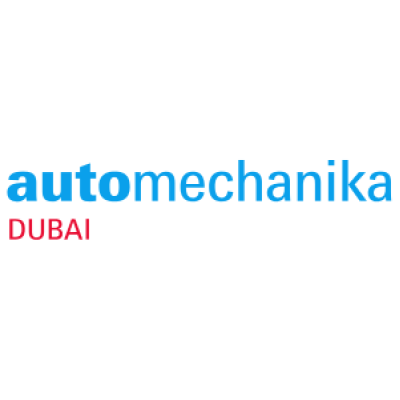


Comments (0)
ADD COMMENT